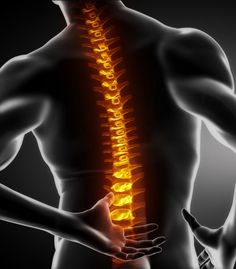
Muscle strain in the back is a common issue that can hinder daily activities and reduce overall quality of life; understanding the “Steps to Alleviate Back Pain from Muscle Strain“ is essential, as addressing back pain effectively involves a combination of immediate care, gradual physical rehabilitation, and preventative measures. This comprehensive guide outlines the best practices to alleviate back pain caused by muscle strain and ensure long-term relief and recovery.
Understanding Muscle Strain in the Back
Back muscle strain occurs when muscle fibers are overstretched or torn. Common causes include:
-
Overexertion during physical activities.
-
Improper lifting techniques.
-
Sudden or awkward movements.
-
Prolonged poor posture.
Symptoms often include localized pain, stiffness, muscle spasms, and reduced mobility. Identifying the symptoms early allows for prompt and effective intervention.
Immediate Actions for Relief
When back pain from muscle strain occurs, addressing it promptly can minimize discomfort and promote recovery.
1. Rest Without Over-Immobilization:
-
Avoid activities that aggravate the pain.
-
Use supportive resting positions with pillows to maintain spinal alignment.
-
Change positions periodically to avoid stiffness.
2. Apply Ice and Heat Therapy:
-
Ice Therapy:
-
Use within the first 48 hours to reduce swelling and numb the area.
-
Apply an ice pack wrapped in a thin cloth for 15-20 minutes at intervals of 2-3 hours.
-
-
Heat Therapy:
-
Use after 48 hours to relax muscles and improve blood flow.
-
Apply a heating pad or hot compress for 20-30 minutes as needed.
-
Alternating ice and heat can provide combined anti-inflammatory and soothing benefits.
3. Use Over-the-Counter Pain Relievers:
-
NSAIDs (e.g., ibuprofen) reduce inflammation and pain.
-
Acetaminophen provides pain relief without addressing inflammation.
-
Follow dosage instructions and consult a healthcare provider if unsure.
Gentle Physical Rehabilitation
Once the acute phase of pain subsides, incorporating gentle physical activities can restore mobility, reduce stiffness, and prevent recurrence.
1. Gentle Stretches:
-
Knee-to-Chest Stretch:
-
Lie on your back and bring one knee to your chest, holding for 20-30 seconds. Alternate legs.
-
-
Cat-Cow Stretch:
-
On all fours, alternate between arching and rounding your back in a slow, controlled motion.
-
-
Pelvic Tilts:
-
While lying on your back, tighten your abdominal muscles and tilt your pelvis upward for a few seconds before releasing.
-
2. Low-Impact Exercises:
-
Walking improves circulation and reduces stiffness.
-
Water-based exercises like swimming engage muscles gently.
-
Yoga poses designed for back pain improve flexibility and strengthen supporting muscles.
3. Gradual Strength Training:
Strengthening core and back muscles helps support the spine and prevents future strains. Examples include:
-
Planks:
-
Hold a forearm plank position for 20-30 seconds.
-
-
Bird-Dog Exercise:
-
On all fours, extend one arm and the opposite leg, alternating sides.
-
-
Superman Pose:
-
Lie face down, lifting your chest, arms, and legs simultaneously and holding briefly.
-
Ergonomic Adjustments and Lifestyle Changes
1. Optimize Posture:
-
Sitting: Use a chair with lumbar support and keep your feet flat on the floor.
-
Standing: Maintain a neutral spine, distribute weight evenly, and avoid slouching.
-
Sleeping: Choose a supportive mattress and use pillows to keep the spine aligned.
2. Improve Ergonomics:
-
Set up workstations that encourage proper body mechanics.
-
Use supportive footwear to reduce stress on your back.
-
Adjust chair and desk heights to promote neutral body positioning.
3. Incorporate Regular Movement:
-
Avoid prolonged sitting or standing.
-
Take breaks to stretch or walk every 30-60 minutes.
Exploring Complementary Therapies
Supplemental therapies can enhance recovery by addressing pain and tension in different ways.
1. Massage Therapy:
-
Relieves muscle tension and promotes relaxation.
-
Improves blood flow to the affected area.
2. Chiropractic Adjustments:
-
Aligns the spine to alleviate pressure on muscles and nerves.
3. Acupuncture:
-
Targets specific points on the body to reduce pain and inflammation.
4. Physical Therapy:
-
A trained therapist can create a tailored plan to rebuild strength, flexibility, and mobility.
Prevention Strategies for Long-Term Relief
Preventative measures are essential to reduce the risk of future back muscle strains.
1. Practice Safe Lifting Techniques:
-
Bend at the knees, not the waist.
-
Hold objects close to your body.
-
Avoid twisting motions while lifting.
2. Maintain a Healthy Weight:
-
Excess body weight places additional strain on the back.
-
Combine a balanced diet with regular exercise to achieve and maintain a healthy weight.
3. Stay Physically Active:
-
Regular low-impact activities strengthen back and core muscles.
-
Include exercises that improve flexibility and balance.
4. Warm Up and Cool Down:
-
Prepare muscles with light stretches before activities.
-
Cool down afterward to reduce muscle tightness and prevent injuries.
When to Seek Professional Help
In some cases, back pain from muscle strain requires medical evaluation and intervention.
Consult a Healthcare Provider If:
-
Pain persists or worsens after one week of self-care.
-
You experience numbness, tingling, or weakness in the legs.
-
Pain results from a fall, accident, or trauma.
-
Mobility becomes significantly restricted.
Possible Medical Treatments:
-
Imaging tests (e.g., X-rays, MRIs) to determine the extent of the injury.
-
Prescription medications for pain or inflammation.
-
Advanced physical therapy for targeted rehabilitation.
Conclusion
Alleviating back pain caused by muscle strain involves a multifaceted approach that includes immediate care, gradual rehabilitation, and preventive measures. By following these best practices, individuals can manage their pain effectively, promote healing, and reduce the likelihood of recurrence. If symptoms persist or worsen, seeking professional medical advice ensures proper diagnosis and treatment. With consistent effort and care, you can maintain a healthy, pain-free back and enjoy an active lifestyle.





Leave a Reply